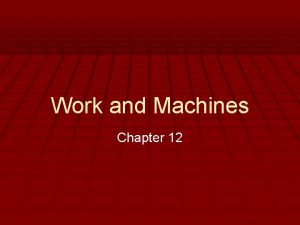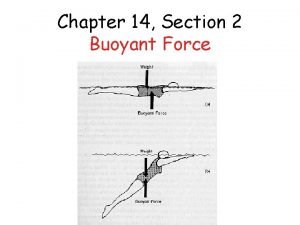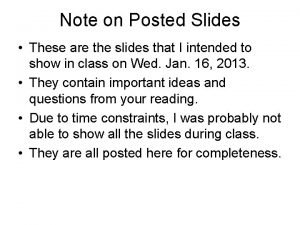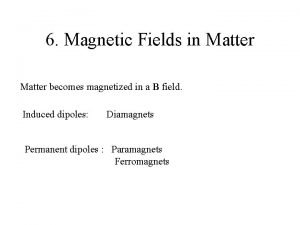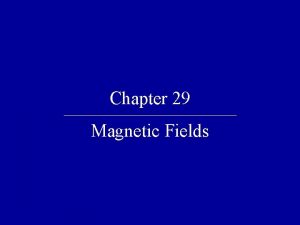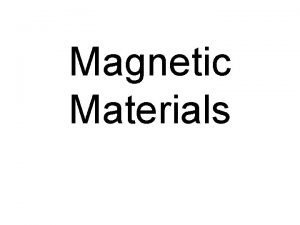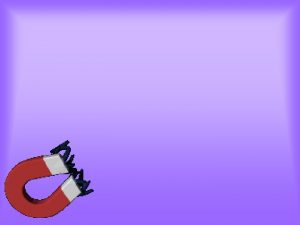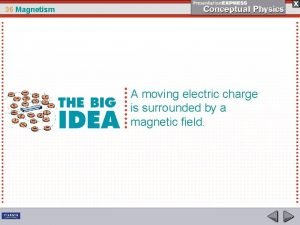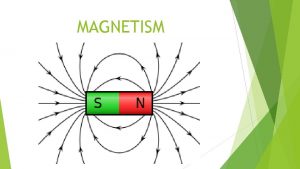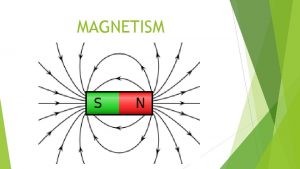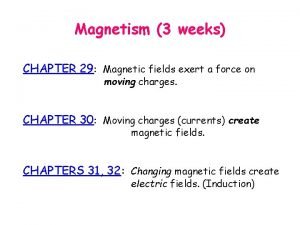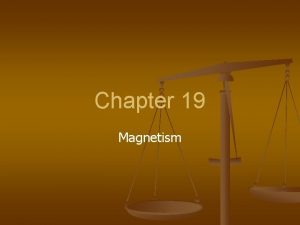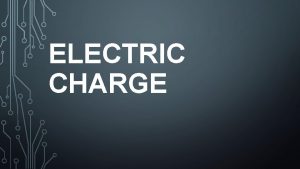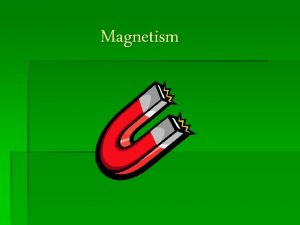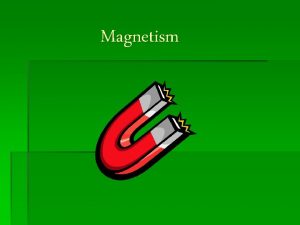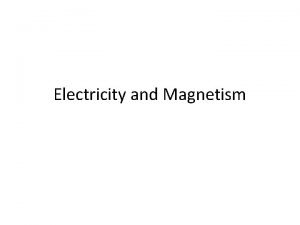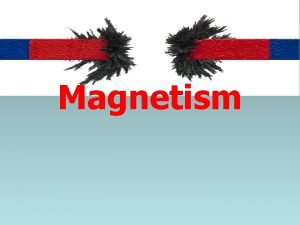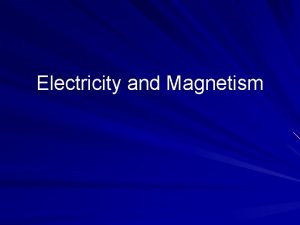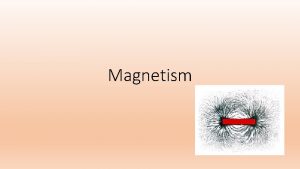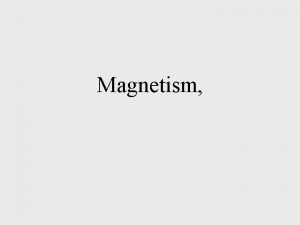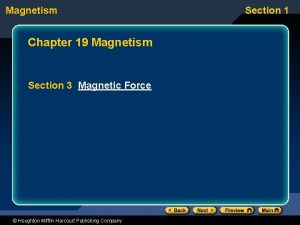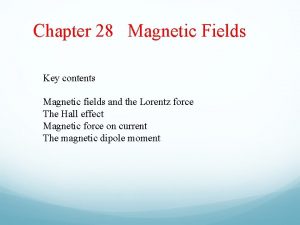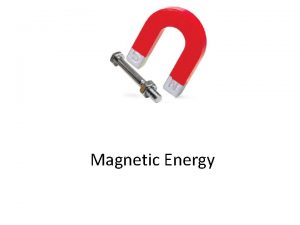Magnetism CHAPTER 29 Magnetic fields exert a force

















- Slides: 17

Magnetism CHAPTER 29: Magnetic fields exert a force on moving charges. CHAPTER 30: Moving charges (currents) create magnetic fields. CHAPTERS 31, 32: Changing magnetic fields create electric fields. (Induction)

Magnetic fields • Magnetic poles, forces, and fields • Force on a moving charged particle • Force on a current-carrying wire

Magnets and Magnetic Forces Similar model to electrostatics: Each magnet has two poles at its ends. S N B is the magnetic field vector (magnetic flux density) Magnetic poles come in two types, “N” and “S”. Due to the Earth’s magnetism, a magnet will tend to rotate until the “N” end points North. (the earth’s north magnetic pole is actually a south pole) Forces between magnets are due to the forces between each pair of poles, similar to the electrostatic forces between point charges.

N N S S S unlike poles attract like poles repel N N N The force gets smaller as distance increases.

Magnetic Field B Magnetic poles produce a field B (think of S as a – charge and of N as a + charge) The external field exerts forces on poles N S F F N S B B

Quiz What is the direction of the force on a magnetic dipole placed in a uniform magnetic field? B S N

Magnetic field lines and Magnetic Dipoles Compass needle (a magnetic dipole) aligns with B B B compass N S S N Lines point out from N pole

Electric charge and Magnetic fields Hans Ørsted discovered (1819) that moving electric charges create magnetic fields. Also, external magnetic fields exert forces on moving electric charges. A current loop acts like a magnetic dipole.

Define B by the force that an external field exerts on a moving charge: Charge q moving with velocity , feels a force (vector product) F B q + v

1) 2) NO work done! 3) 4) For a negative charge, the force is in the opposite direction. UNITS: Also… 1 Gauss (G) = 10 -4 T

Typical Fields Earth’s Field ~ 1 x 10 -4 T (1 Gauss) Strong fridge magnet ~ 10 -2 T (100 G) Big lab electromagnet ~ 4 T (40, 000 G) Superconducting magnet up to ~ 20 T (200, 000 G)

Vector Diagrams The three vectors F, v, B never lie in a single plane, so the diagrams are always three-dimensional. The following convention helps with drawing the vectors. For vectors perpendicular to the page, we use: X into the page (tail feathers of arrow) out of the page (point of arrow)

Examples For a positive charge q moving with velocity v: draw the force vector. x x x x B x vx B v v x v B B

B Wire + + + + current I L Current I flows from left to right. In what direction is the force on the wire?

B + + + + The total force on the wire of length L is F = Nqv x B, where N is the number of charges in length L. N = (number of charges/volume) x (volume) = n x (AL), where A is the cross-sectional area So, F = (n. ALqv) x B = (nqv. A)L x B or, F=ILx. B (straight wire, uniform B) The vector length L points along the wire in the direction of the current.

Example Assume the earth’s magnetic field is 0. 5 x 10 -4 T, and points North, 50 o below the horizontal. up 0. 5 x 10 -4 T What is the force (magnitude and direction) on a straight horizontal power line 100 m long, carrying 400 A: A) if the current is flowing North B) if the current is flowing East north 50 o

Solution
 Chapter 24 magnetism magnetic fundamentals answers
Chapter 24 magnetism magnetic fundamentals answers F=i(lxb)
F=i(lxb) Red fields to green fields
Red fields to green fields Compound machine
Compound machine What is the upward force that fluids exert on all matter
What is the upward force that fluids exert on all matter A boxer cannot exert much force
A boxer cannot exert much force Learning: module 26: magnetic forces and fields
Learning: module 26: magnetic forces and fields Magnets and magnetic fields lesson 1 answer key
Magnets and magnetic fields lesson 1 answer key Magnetic field in matter
Magnetic field in matter Magnetic fields quick
Magnetic fields quick Electric currents and magnetic fields
Electric currents and magnetic fields Electric currents and magnetic fields
Electric currents and magnetic fields Hysteresis loop
Hysteresis loop Why is magnetism an invisible force
Why is magnetism an invisible force Types of ferrites
Types of ferrites Weber magnetic field
Weber magnetic field Magnetic moment and magnetic field relation
Magnetic moment and magnetic field relation Magnetism
Magnetism



